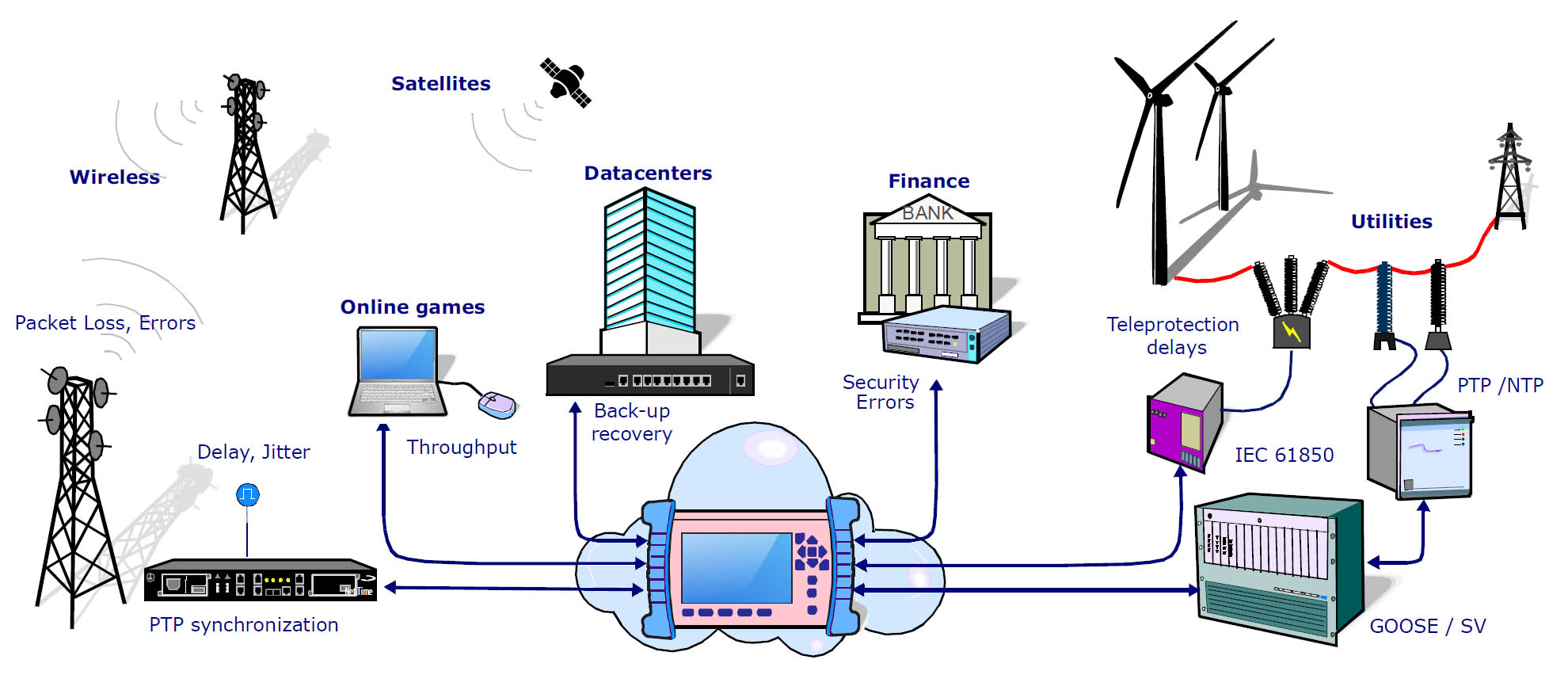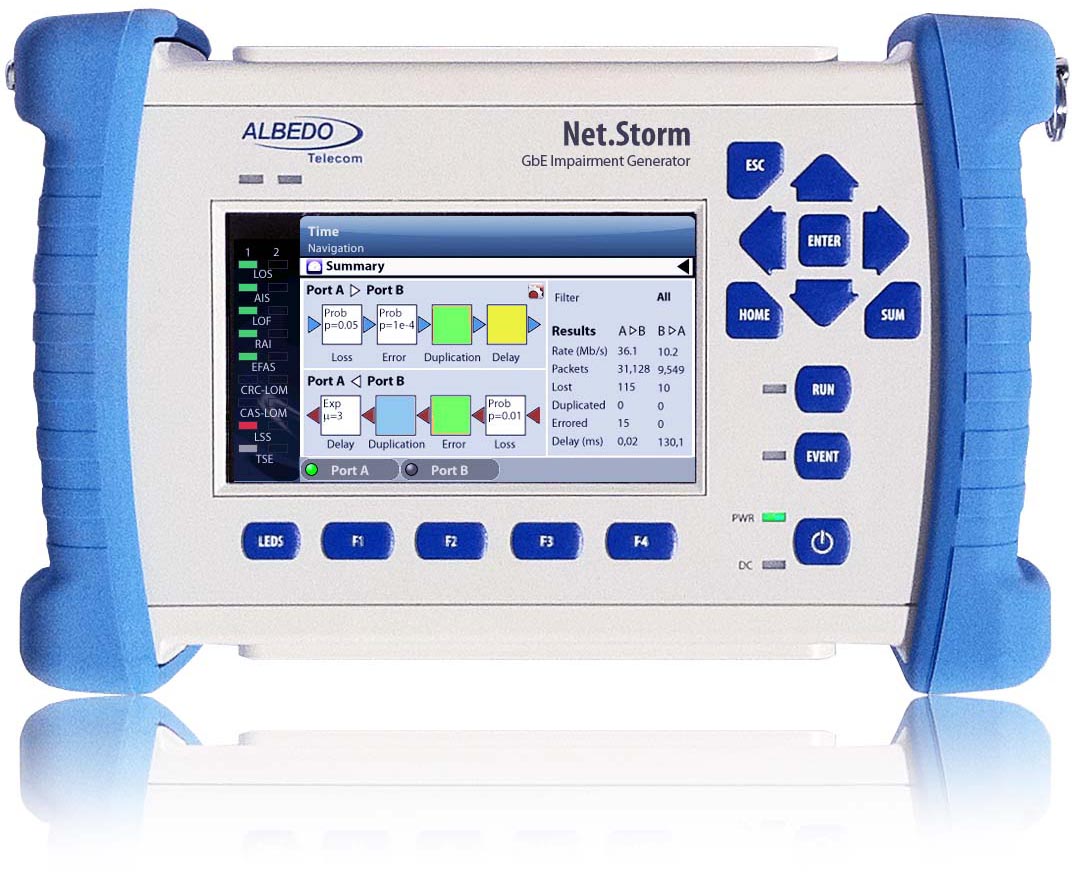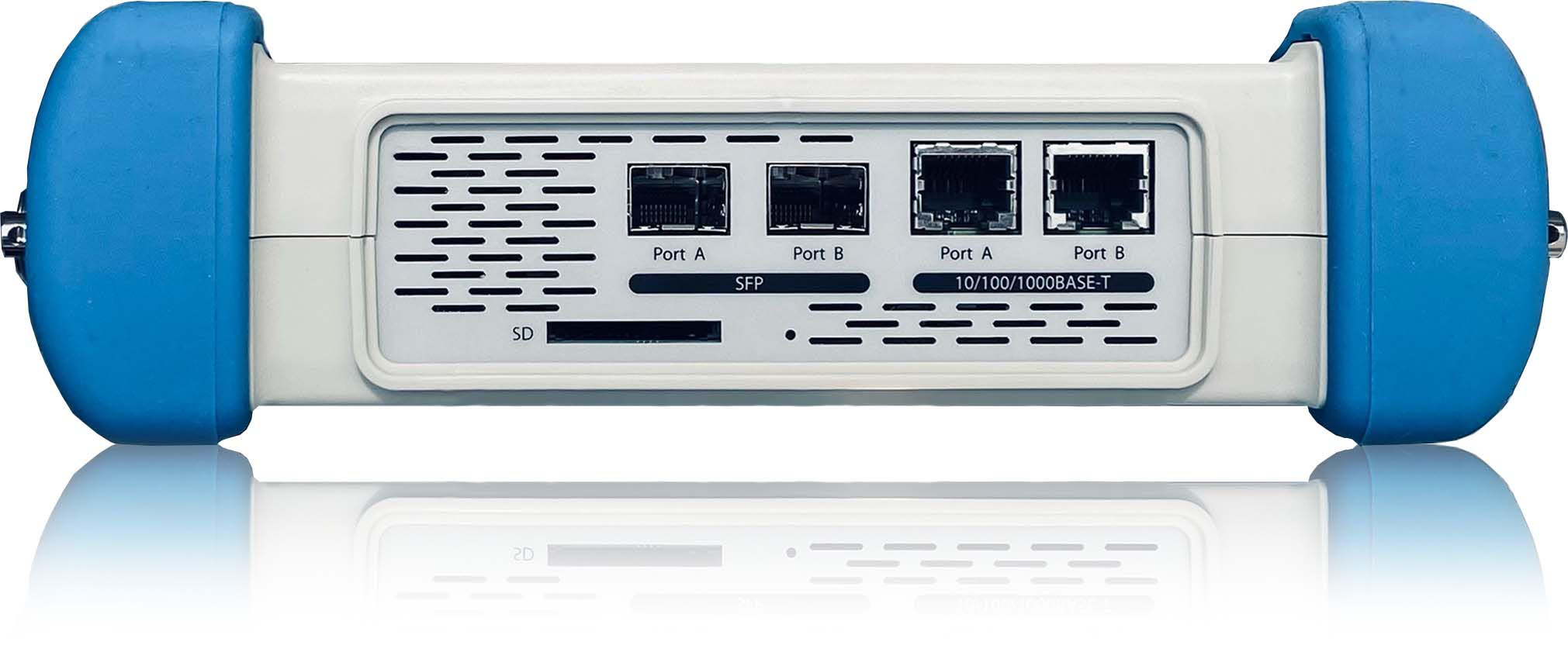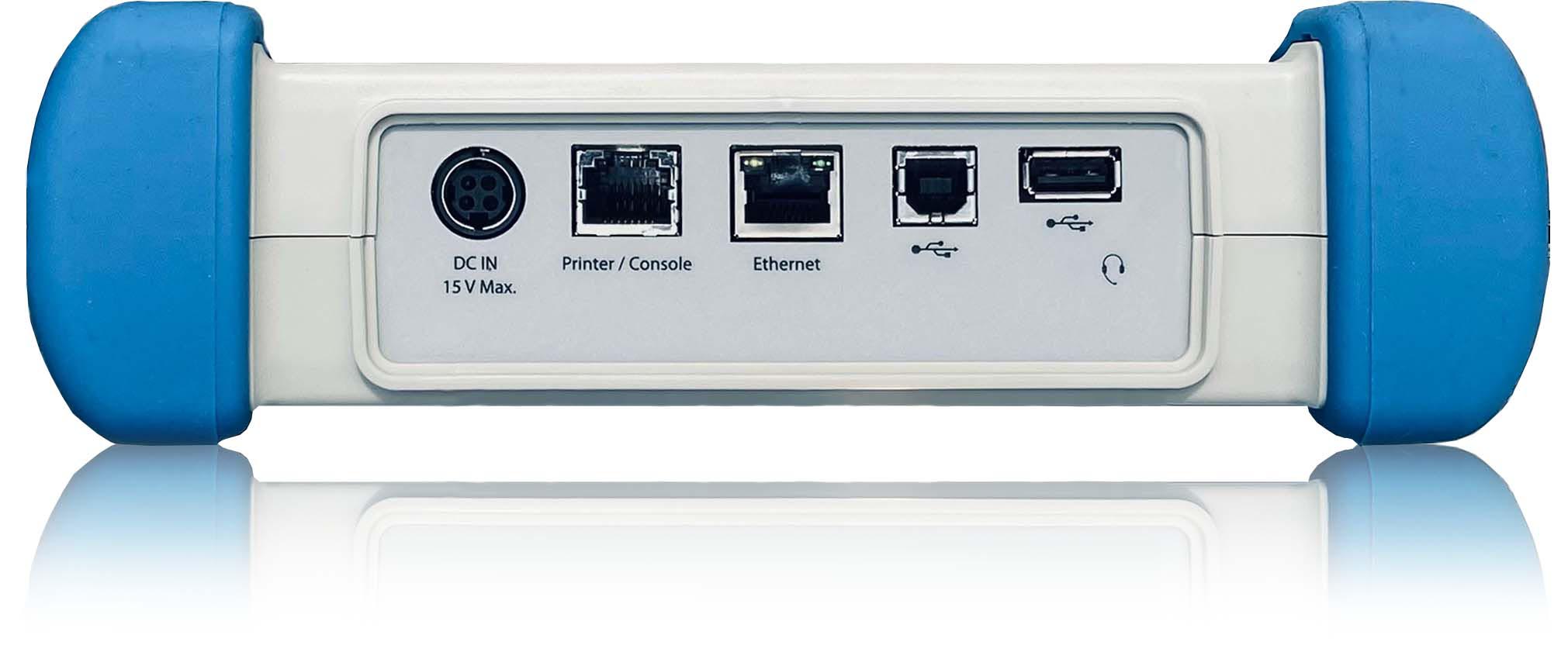Net.Storm
Net.Storm simulates links and networks in terms of bandwidth and quality of service. Traffic is separated by user-defined filters into independent flows that receive specific treatment to replicate real-world traffic conditions through impairments and bandwidth limitations.
Net.Storm allows you to model network dynamics using arbitrary impairments and throughput management to verify how tolerant your designs are to degradations in the parameters that define the quality and capacity of your transmission network. The goal is to better understand the behavior of new devices and systems or to identify what is causing problems.
Define Streams
You can separate traffic into streams using any of the sixteen filters available in each direction (Tx+Rx), and then each stream will receive specific treatment. Filters can be MAC addresses, TCP ports, GOOSE protocol... whatever you can identify in the headers of the packets.
Set Bandwidth
The channel capacity of each flow can now be characterized using traffic shaping or traffic policy algorithms, just as a gateway, router, or pseudowire would do to limit and prioritize available bandwidth.
Select Quality
Each flow is now conducted to the impairment engines, which are a set of perturbations such as delay, jitter, packets, errors, duplications, etc. that can be programmed to occur with statistical periodicity.
Realistic Network conditions
The result is a system that exactly replicates network conditions in a 100% controlled manner because all operations are performed by FPGA hardware-like engines with microsecond accuracy and, most importantly, with zero virtual delay for the rest of the traffic that is not affected by the emulation. Forget about cheap software-based emulations because the CPU can't handle medium or higher bit rates and will only work when the traffic is below a few kbps.
Think of Net.Storm as a real network, configurable with the characteristics you need in your lab to verify how it all works under network stress.
Universal Network Emulation
It makes sense to gain insight and discover network tolerances before they become problematic because predictable performance is required in all systems, especially those that operate critical infrastructures in a lot of industries as diverse as energy, telecommunications, finance, and data centers. For all of these, engineers will be able to simulate exactly the same conditions they will find on the Internet/substation/microwave/satellite/submarine links, which can always suffer from throughput limitations and quality degradation.
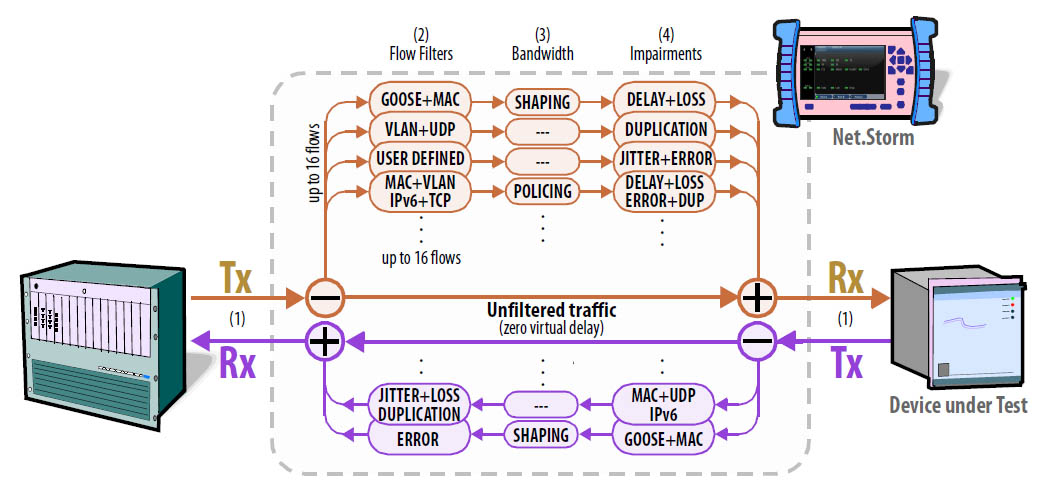
Indoors - outdoor
Net.Storm is an extremely flexible can be used in several ways:
- Stand-alone with touch screen display and batteries, ideal for outdoor use
- Desktop device with mouse, keyboard to be managed in the permanent labs
- Remote unit with a laptop running the VNC application.
Features and Benefits
